NỒNG ĐỘ HUYẾT THANH MỘT SỐ CYTOKINE (GM-CSF, IL-10, IL-12 VÀ IL-17A) TRONG BỆNH HỒNG BAN ĐA DẠNG LAN TỎA
Nội dung chính của bài viết
Tóm tắt
Đây là nghiên cứu mô tả cắt ngang trên 33 bệnh nhân được chẩn đoán hồng ban đa dạng (erythema multiforme-EM) có thương tổn da lan tỏa tại Bệnh viện Da liễu Trung ương từ tháng 4 năm 2017 tới tháng 8 năm 2019 nhằm khảo sát nồng độ huyết thanh một số cytokine. Sử dụng kỹ thuật hấp phụ miễn dịch vi hạt đánh dấu huỳnh quang (fluorescence covalent microbead immunosorbent assay) phát hiện đồng thời nhiều cytokine: yếu tố kích thích dòng tế bào hạt-đại thực bào (granulocyte-macrophage colony-stimulating factor, GM-CSF), interleukin(IL)-10 và IL-12 và IL-17A. Kết quả cho thấy tuổi trung bình của các bệnh nhân EM có thương tổn lan tỏa là 42,2. Có 22 bệnh nhân (66,7%) có thời gian bị bệnh dưới 1 tuần. Có 60,6% bệnh nhân có tiền sử dùng thuốc trước khi bị bệnh. Chỉ có 15,2% bệnh nhân có thương tổn niêm mạc. Ở nhóm EM, nồng độ huyết thanh GM-CSF, IL-12 và IL-17A lần lượt là 5,43±13,22 pg/ml; 0,92±2,19 pg/ml và 0,28±0,29 pg/ml; thấp hơn so với nhóm khỏe mạnh, sự khác biệt có ý nghĩa thống kê với p<0,001 hay p<0,01. Nồng độ huyết thanh GM-CSF, IL-12 và IL-17A ở nhóm khỏe mạnh lần lượt là 31,99±31,64 pg/ml; 5,47±4,5 pg/ml và 1,46±2,18 pg/ml. Nồng độ huyết thanh IL-10 của nhóm EM là 9,86±15,29 pg/ml, không khác biệt so với nhóm khỏe mạnh (11,84±11,09 pg/ml). Không có mối tương quan giữa nồng độ huyết thanh các cytokine với tuổi của các bệnh nhân EM.
Chi tiết bài viết
Từ khóa
Hồng ban đa dạng, interleukin-10, interleukin-12, interleukin-17A, herpes simplex virus, GM-CSF
Tài liệu tham khảo
2. Patel PM, Jones VA, Murray TN, Amber KT. A Review Comparing International Guidelines for the Management of Bullous Pemphigoid, Pemphigoid Gestationis, Mucous Membrane Pemphigoid, and Epidermolysis Bullosa Acquisita. Am J Clin Dermatol. 2020;21(4):557-565. doi:10.1007/s40257-020-00513-3
3. Shah SN, Chauhan GR, Manjunatha BS, Dagrus K. Drug induced erythema multiforme: two case series with review of literature. J Clin Diagn Res JCDR. 2014;8(9):ZH01-04. doi:10. 7860/JCDR/2014/10173.4761
4. Samim F, Auluck A, Zed C, Williams PM. Erythema multiforme: a review of epidemiology, pathogenesis, clinical features, and treatment. Dent Clin North Am. 2013;57(4):583-596. doi:10.1016/j.cden.2013.07.001
5. Aurelian L, Ono F, Burnett J. Herpes simplex virus (HSV)-associated erythema multiforme (HAEM): a viral disease with an autoimmune component. Dermatol Online J. 2003;9(1):1.
6. Ho A.W. and Kupper T.S. (2019). Soluble mediators of the cutaneous immune system. Fitzpatrick's Dermatology, 9th edition, McGraw Hill Education, p. 159-192.
7. Schulte W, Bernhagen J, Bucala R. Cytokines in sepsis: potent immunoregulators and potential therapeutic targets--an updated view. Mediators Inflamm. 2013;2013:165974. doi:10.1155/2013/ 165974
8. Akkurt ZM, Uçmak D, Türkcü G, Yüksel H, Yildiz K, Arıca M. Expression of interleukin-17 in lesions of erythema multiforme may indicate a role for T helper 17 cells. Cent-Eur J Immunol. 2014;39(3):370-376. doi:10.5114/ceji.2014.45950
9. Quaglino P, Caproni M, Osella-Abate S, et al. Serum interleukin-13 levels are increased in patients with Stevens-Johnson syndrome/ toxic epidermal necrolysis but not in those with erythema multiforme. Br J Dermatol. 2008; 158(1):184-186. doi:10.1111/j.1365-2133.2007. 08259.x
10. Hashizume H, Fujiyama T, Tokura Y. Reciprocal contribution of Th17 and regulatory T cells in severe drug allergy. J Dermatol Sci. 2016;81(2): 131-134. doi:10.1016/j.jdermsci. 2015.11.002


